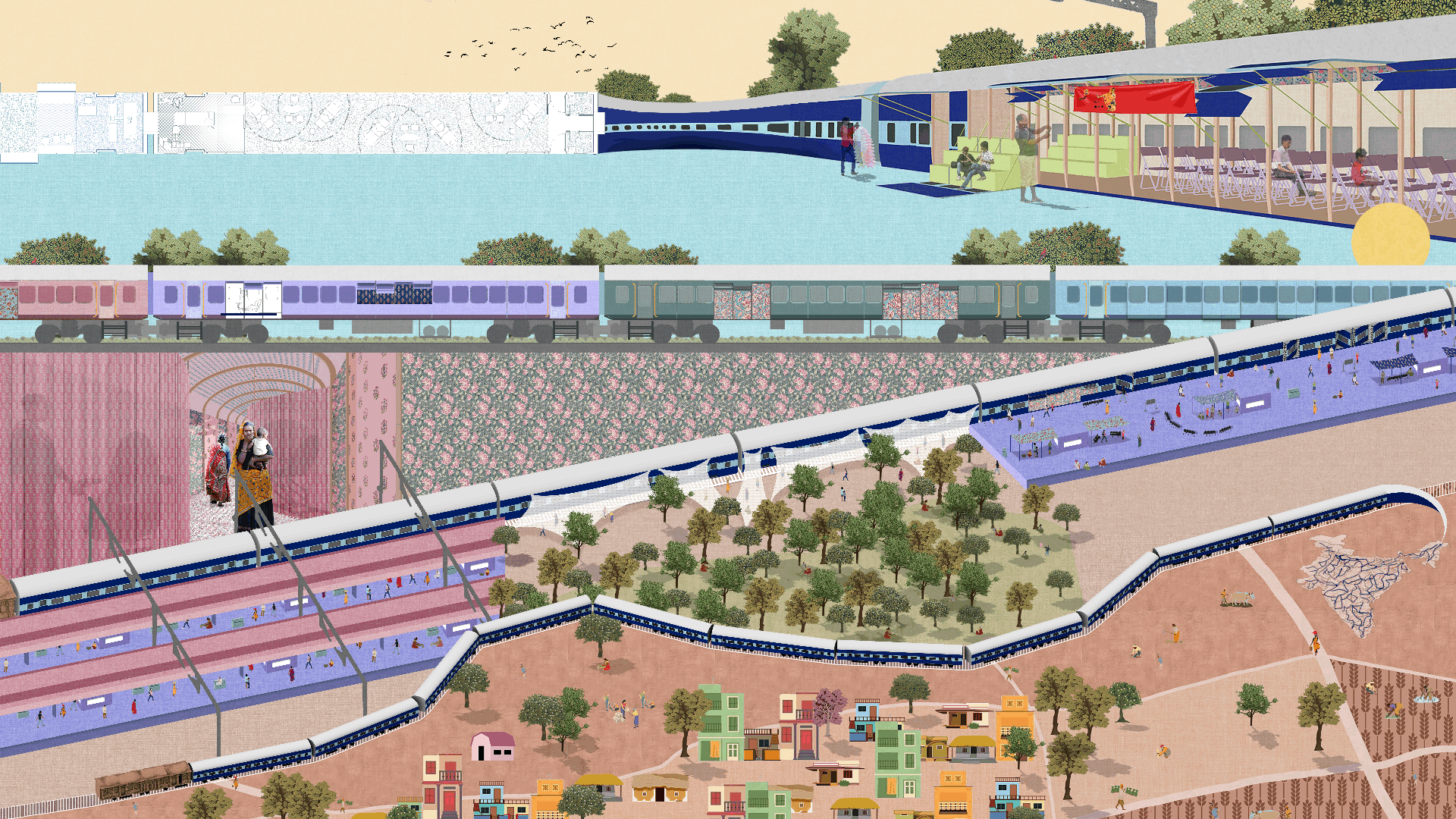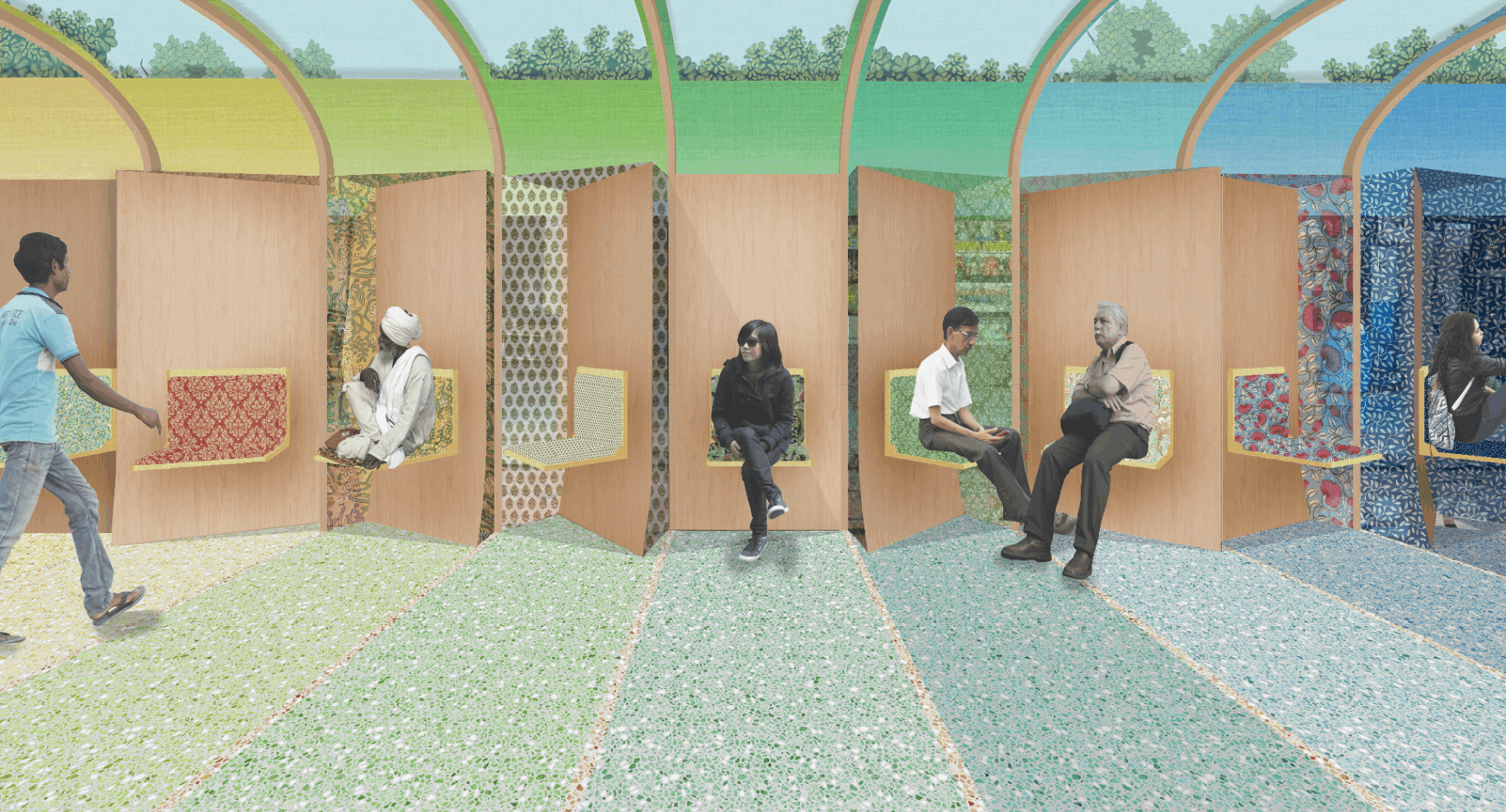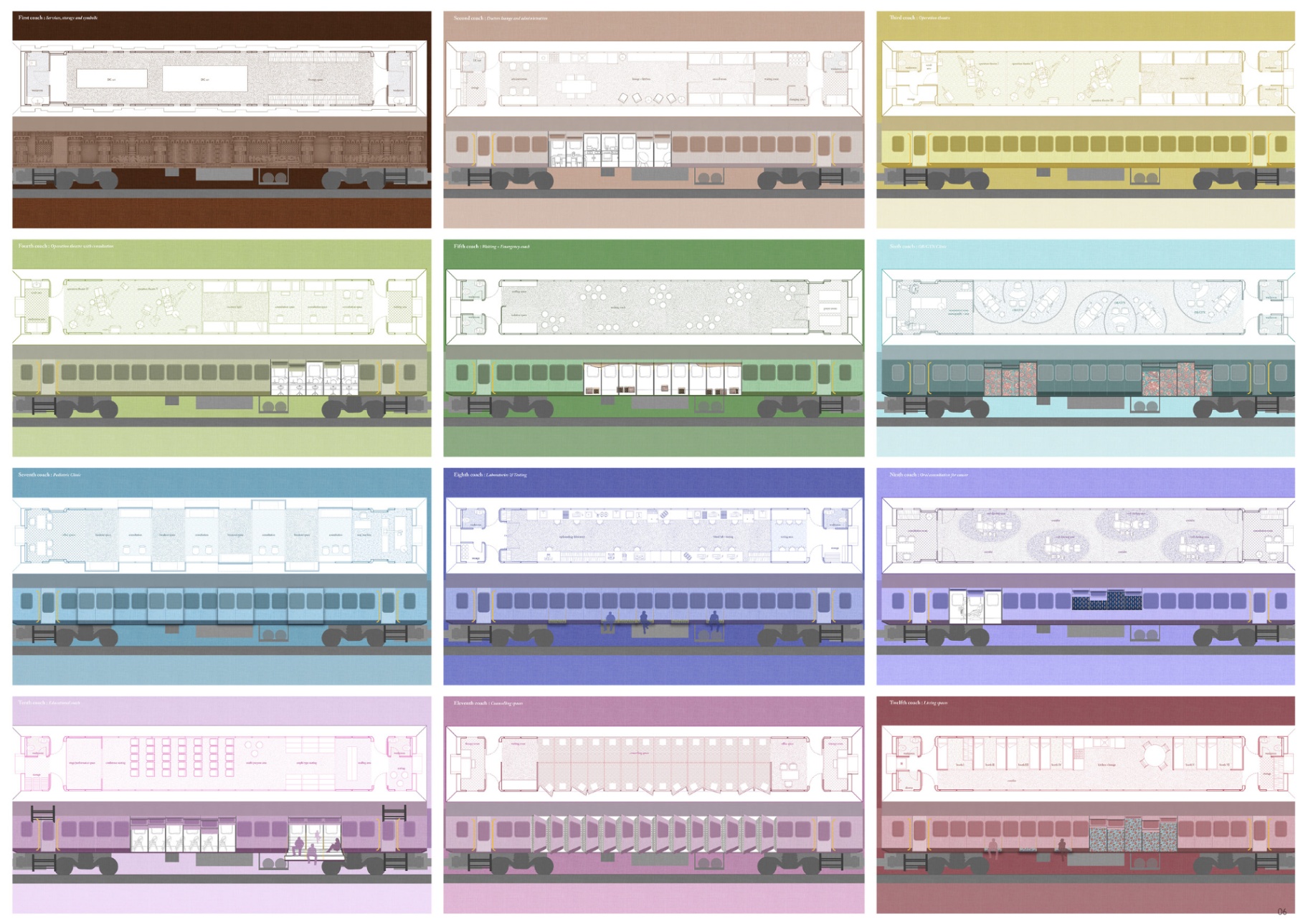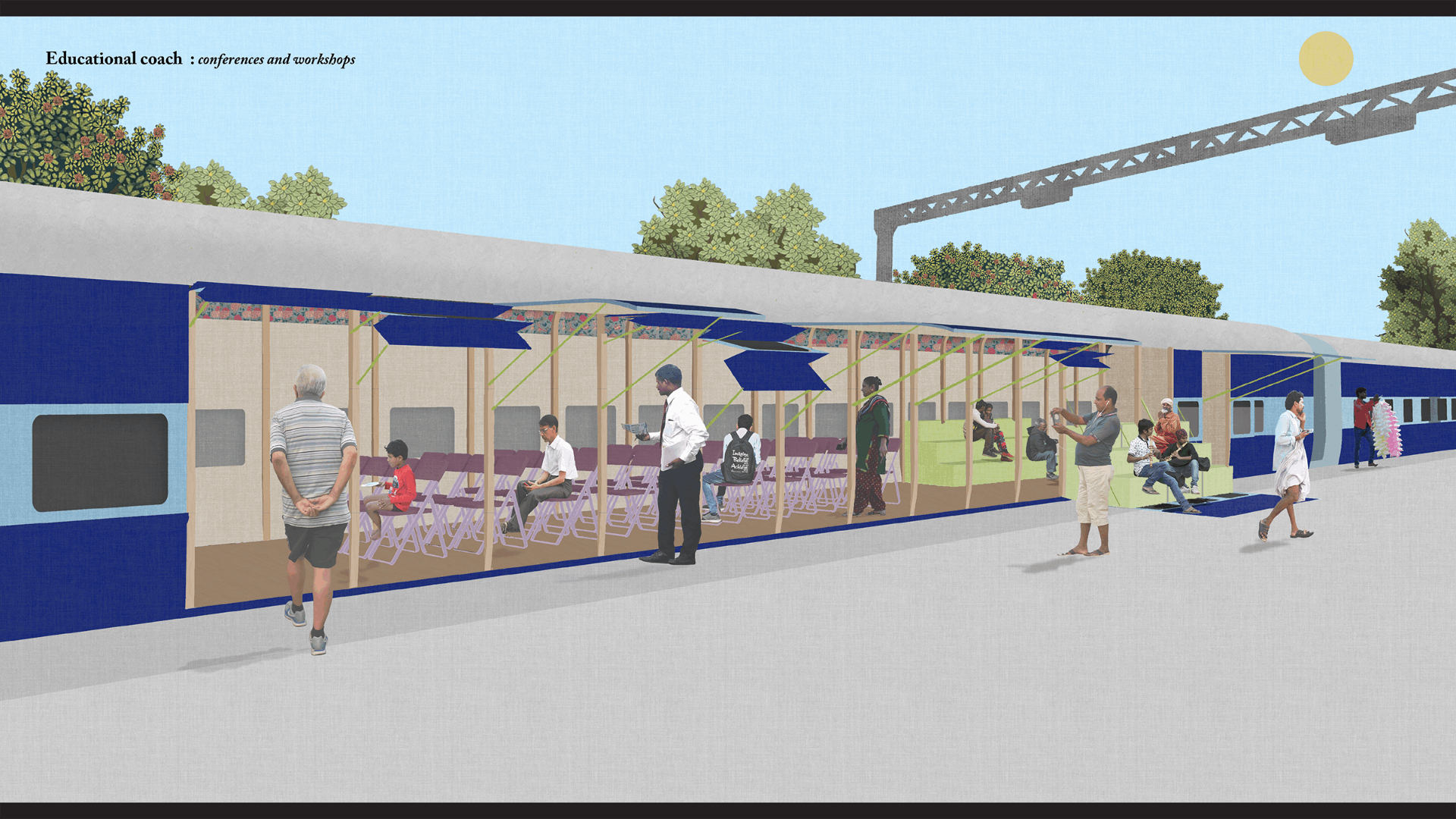Back
Journey of Care
Year: 2022
Category: Healthcare Architecture
Skills: Rhino, Illustrator, Photoshop, AutoCAD
Journey of Care is a project based in India that seeks to reimagine the country's public transport infrastructure as a means of providing access to healthcare. India faces many challenges when it comes to healthcare, with the Global Gender Gap Report of 2021 showing that China and India together account for around 1.5 million missing female births each year worldwide. In addition, almost half of the 47 million pregnancies in India each year are unintended, and women and mothers in particular face gaps in healthcare access. To address these issues, Journey of Care proposes to repurpose the Lifeline Express train as a mobile healthcare facility that can reach people across the country. India has one of the latest train systems in the world. A symbol of British colonialism, this state-owned system operates on a massive scale, with over 7000 stations and more than 68,000 km of tracks, spanning across the country. For many Indians, the train is not just a mode of transportation but an important part of their culture and heritage and its connections to the far-flung corners of the country played a crucial role in the creation of a shared national identity that transcended regional and linguistic differences. The Lifeline Express is a hospital train that has been in operation in India since 1991. It was established through a collaboration between Impact India Foundation, the Indian Railways, and the Health Ministry, and has run around 200 projects since its inception. Currently, the train has seven coaches, including an office space, a conference car, staff car, two operation theater cars, and, in recent years, a mammography machine and a cancer awareness coach. The train operates on a project-based model, with government or private companies sponsoring the cost of healthcare camps in cities of their choice. To expand on this model, Journey of Care proposes to add 11 coaches and a first car to the Lifeline Express. These new coaches would include two clinics for obstetrics-gynecology and pediatric care, a mental health coach, and educational coaches for workshops and awareness programs. In order to challenge the norms around openness and reproductive health, the train has been designed to be performative, interactive, and modular in its response to climate and program across different geographies. This includes the use of foldable, pivoting, and tilting panels to provide a sense of openness, shade, and play with light and shadow. Transparency through textures and fabric provides a level of privacy between indoor and outdoor spaces and creates a sense of comfort. When the train is stationary, the various permutations on the coaches' facade can be altered, allowing for transformation not just of the train's physical form but also of its identity. Overall, Journey of Care's proposal is for a modular motion system that can provide accessible and comfortable healthcare to all, challenging the spatial and functional limitations of what a train can do. While the passage could still benefit from more specific details about the Lifeline Express and the challenges faced by women and mothers in India, the revised version provides a clearer and more concise overview of the project's goals and proposed solutions.
The image is a composite of everything the project stands for, highlighting the multi-scalar networks of care established in the project
The panels on the facade pivot at angles and with the use of fabric, challenge visual privacy with what's happening on the outside as well as with the care provider. The ceiling has sky lights to bring in light and connection with nature. The space with its flexibility helps to break the monotony of the train and the usual emotions one relates to it
The 12 coaches of the train in relation to each other and the program that they are associated with . Each coach facade performs separately in relation to the function it is supposed to carry, thus creating dynamism in its performance
The various ways in which the facade has been treated. Pivoting panels, tilting, openings and seating spaces for people to interact with the outdoors as well.
This is a view of the educational coach, the facade of which is mostly foldable and openable panels to make it more accessible to people. The module of steps in one of the facade panels, when opened also forms an amphi-like seating thus extending the services of the train to the platform. The space can be used as workshops to spread awareness of reproductive health as well and also has reading corners and when all the panels are shut, the windows can be used to perform acts like puppetry to keep the users attracted.
ridhi chopra
More by ridhi chopra
View profile



